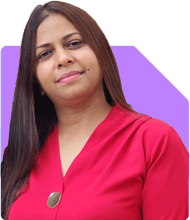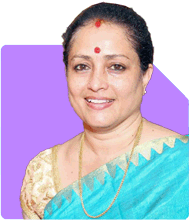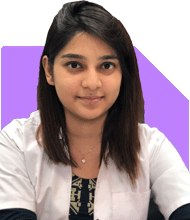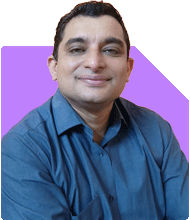मेरी उम्र 40 साल है और मेरे पति की उम्र 48 साल है। हमारा एक बेटा 8 साल का और एक बेटी 12 साल की है। हम दोनों ही व्यवसाय में हैं। 18 साल की उम्र में दोनों बच्चों की शिक्षा के लिए आदर्श राशि कितनी होनी चाहिए? वर्तमान व्यावसायिक आय से हम हर महीने ₹50,000 बचा सकते हैं।
Ans: आप जल्दी सोच रहे हैं। यह अपने आप में एक समझदारी भरा कदम है। कई माता-पिता योजना बनाने में देरी करते हैं और बाद में कर्ज़ के लिए संघर्ष करते हैं। आप उस स्थिति में नहीं हैं। इसलिए आपके दृष्टिकोण की सराहना करते हैं।
आपने उच्च शिक्षा के लिए आदर्श कोष के बारे में पूछा था। शिक्षा का खर्च तेज़ी से बढ़ रहा है। इसलिए जल्दी योजना बनाने से बाद में वित्तीय दबाव से बचा जा सकता है।
आपके दो बच्चे हैं। आपकी बेटी 12 साल की है और आपका बेटा 8 साल का है। आपकी बेटी के लिए लगभग छह साल और आपके बेटे के लिए लगभग दस साल हैं। इस समय सीमा को देखते हुए, आपको एक उचित संरचित योजना की आवश्यकता है।
"भविष्य की शिक्षा लागत को समझना"
भारत में शिक्षा मुद्रास्फीति बहुत अधिक है। यह साल दर साल बढ़ रही है। यहाँ तक कि व्यावसायिक पाठ्यक्रम भी महंगे होते जा रहे हैं। कॉलेज की फीस, छात्रावास की फीस, किताबें, डिजिटल उपकरण और परिवहन भी लागत बढ़ाते हैं।
आपको इस मुद्रास्फीति पर विचार करने की आवश्यकता है। उच्च शिक्षा की लागत आज के मूल्य पर नहीं रहेगी। यह बढ़ेगी।
इसलिए यदि आज एक मानक स्नातक कार्यक्रम की लागत कुछ लाख रुपये के आसपास है, तो छह से दस वर्षों में लागत बहुत अधिक हो सकती है। इसलिए कोष का अनुमान लगाते समय इस भविष्य की लागत को ध्यान में रखना चाहिए।
आज आपको सटीक आँकड़ों की ज़रूरत नहीं है। आपको योजना बनाने के लिए एक लक्ष्य सीमा की ज़रूरत है। एक आरामदायक सीमा स्पष्टता प्रदान करती है।
"उच्च शिक्षा के लिए विशिष्ट लागत संरचना"
उच्च शिक्षा की लागत इस पर निर्भर करती है:
"निजी या सरकारी संस्थान"
"पाठ्यक्रम का प्रकार"
"शहर या विदेश विकल्प"
"अवधि"
इंजीनियरिंग, मेडिकल, प्रबंधन या प्रौद्योगिकी पाठ्यक्रमों के लिए, लागत ज़्यादा होती है। सरकारी कॉलेजों के लिए लागत कम होती है, लेकिन सीटें सीमित होती हैं। निजी कॉलेज ज़्यादा सुलभ होते हैं, लेकिन महंगे होते हैं।
इसलिए केवल सरकारी कॉलेज की धारणा पर आधारित योजना बनाने से धन की कमी हो सकती है। निजी कॉलेजों की सीमा के आधार पर योजना बनाने से सुरक्षित मार्जिन मिलता है।
"दोनों बच्चों के लिए सुझाया गया कोष"
आपकी बेटी के लिए, अगले छह वर्षों के अंतराल और मुद्रास्फीति को ध्यान में रखते हुए, लक्ष्य सीमा ज़्यादा होनी चाहिए। आपके बेटे के लिए, आपके पास ज़्यादा समय है। इसलिए उसका कोष बेहतर ढंग से बढ़ सकता है क्योंकि समय के साथ चक्रवृद्धि ब्याज ज़्यादा काम करता है।
अधिकांश पाठ्यक्रमों को कवर करने वाले एक आरामदायक शिक्षा कोष के लिए, कई परिवार ज़्यादा संख्या के लिए योजना बनाते हैं। इससे बिना किसी तनाव के बेहतर कॉलेज चुनने की सुविधा मिलती है।
तो आप दोनों बच्चों के लिए इस तरह एक बड़ा लक्ष्य रख सकते हैं:
– बेटी: अगले छह सालों के लिए एक मज़बूत शिक्षा निधि का लक्ष्य रखें
– बेटा: अगले दस सालों के लिए एक समान या थोड़ा ज़्यादा निधि का लक्ष्य रखें क्योंकि भविष्य में खर्च ज़्यादा हो सकते हैं।
अगर आपका बच्चा कम खर्चीला रास्ता चुनता है, तो आपको पूरी राशि की ज़रूरत नहीं पड़ सकती है। लेकिन अतिरिक्त बचत से सुकून मिलता है।
» आपकी बचत क्षमता
आपने बताया कि आप हर महीने 50,000 रुपये बचा सकते हैं। यह एक मज़बूत बचत क्षमता है। लेकिन यह बचत पूरी तरह से एक ही लक्ष्य पर खर्च नहीं होनी चाहिए। आपको भविष्य की सेवानिवृत्ति योजना, आपातकालीन निधि और जीवन के अन्य लक्ष्यों की भी आवश्यकता होगी।
फिर भी, इस राशि का एक उचित हिस्सा शिक्षा योजना के लिए आवंटित किया जा सकता है। कुछ परिवार अपनी बचत को तात्कालिकता और समय के आधार पर बाँटते हैं। चूँकि बेटी का लक्ष्य निकट है, इसलिए उसे अधिक स्थिर आवंटन की आवश्यकता हो सकती है।
आपके बेटे का लक्ष्य दीर्घकालिक है। इसलिए उसका हिस्सा लंबे समय तक विकास संपत्ति में रह सकता है।
» सही निवेश शैली चुनना
आपके बेटे की शिक्षा जैसे दीर्घकालिक लक्ष्य के लिए इक्विटी में निवेश ज़रूरी है। इक्विटी दीर्घकालिक विकास की बेहतर संभावनाएँ प्रदान करती है। यह सावधि जमाओं की तुलना में मुद्रास्फीति को बेहतर ढंग से मात देती है।
लेकिन आपकी बेटी के लिए, शुद्ध इक्विटी जोखिम पैदा कर सकती है क्योंकि लक्ष्य निकट है। बाजार में उतार-चढ़ाव अंतिम राशि को प्रभावित कर सकते हैं। इसलिए उसे एक संतुलित परिसंपत्ति मिश्रण की आवश्यकता है।
इसलिए दोनों के लिए निवेश दृष्टिकोण अलग-अलग होना चाहिए।
"परिसंपत्ति आवंटन रणनीति"
छह साल की अवधि वाली आपकी बेटी के लिए:
"संतुलित प्रकार की श्रेणी में अधिक आवंटन"
"विविध श्रेणियों के माध्यम से इक्विटी में कुछ आवंटन"
"अंतिम तीन वर्षों में इक्विटी आवंटन में कमी"
यह संरचना बाद के वर्षों में पूँजी की सुरक्षा करती है।
दस साल की अवधि वाले आपके बेटे के लिए:
"शुरुआत में अधिक इक्विटी आवंटन"
"व्यवस्थित निवेश जारी रखें"
"लक्ष्य अवधि के करीब आते ही जोखिम आवंटन को धीरे-धीरे कम करें"
यह विकास और सुरक्षा में मदद करता है।
"गलत निवेश उत्पादों से बचें"
माता-पिता अक्सर शिक्षा के लिए पारंपरिक बीमा योजनाएँ या बच्चों की पॉलिसी खरीदते हैं। ये पॉलिसी कम रिटर्न देती हैं। ये पैसे को फँसा देती हैं और धन सृजन की संभावना को कम करती हैं।
इसलिए शिक्षा संबंधी लक्ष्यों के लिए पूरी तरह से बीमा आधारित उत्पादों से बचें। बीमा अलग है। निवेश अलग है। यह अलगाव स्पष्टता और बेहतर विकास सुनिश्चित करता है।
यदि आपके पास पहले से ही कोई यूलिप या निवेश बीमा उत्पाद है, तो यह कारगर नहीं हो सकता है। केवल तभी जब आपके पास ऐसी पॉलिसी हों, आप समीक्षा कर सकते हैं और विचार कर सकते हैं कि क्या सरेंडर की आवश्यकता है और म्यूचुअल फंड में पुनर्निवेश कर सकते हैं। यदि आपके पास ऐसी पॉलिसी नहीं हैं, तो चिंता करने की कोई आवश्यकता नहीं है।
सक्रिय रूप से प्रबंधित म्यूचुअल फंड की भूमिका
दीर्घकालिक लक्ष्यों के लिए, सक्रिय रूप से प्रबंधित म्यूचुअल फंड बेहतर लचीलापन और विशेषज्ञ प्रबंधन प्रदान करते हैं। इन्हें मुद्रास्फीति से बेहतर प्रदर्शन करने के लिए डिज़ाइन किया गया है। सीएफपी समर्थन वाले म्यूचुअल फंड वितरक के माध्यम से एक नियमित योजना मार्गदर्शन में मदद करती है। वे आपके लक्ष्य पर नज़र रखते हैं और अस्थिर दौर में सलाह भी देते हैं।
प्रत्यक्ष फंड व्यय अनुपात के मामले में सस्ते लगते हैं। लेकिन इनमें सलाहकार सहायता का अभाव होता है। दीर्घकालिक निवेशक अक्सर प्रत्यक्ष निवेश में भावनात्मक गलतियाँ करते हैं। वे एसआईपी बंद कर देते हैं या गलत योजनाओं में बदलाव कर लेते हैं। इसलिए सलाहकार समर्थित निवेश महंगी व्यवहार संबंधी गलतियों से बचाता है।
इंडेक्स फंड सरल और कम लागत वाले लगते हैं। लेकिन वे केवल बाज़ार का अनुसरण करते हैं। वे गिरावट के दौरान सुरक्षा प्रदान नहीं करते। कोई रणनीति या शोध नहीं होता। सक्रिय रूप से प्रबंधित फंड बाज़ार अनुसंधान और मूल्यांकन के आधार पर होल्डिंग्स को समायोजित करते हैं। शिक्षा जैसे जीवन लक्ष्यों के लिए, सुचारू विकास और रणनीति की आवश्यकता होती है।
इसलिए सलाहकार सहायता के साथ नियमित योजना आपको अनावश्यक भावनात्मक निर्णयों से बचने में मदद करती है।
"व्यवस्थित निवेश का महत्व"
एक निश्चित मासिक SIP अनुशासन प्रदान करता है। यह बाज़ार की अस्थिरता से भी लाभान्वित होता है। जब बाज़ार गिरता है, तो SIP अधिक यूनिट खरीदता है। तेज़ी के दौर में, मूल्य बढ़ता है।
एक संरचित SIP दोनों लक्ष्यों में मदद करता है। बेटी के लिए, SIP को धीरे-धीरे कम अस्थिरता वाले फंडों की ओर स्थानांतरित करना चाहिए। बेटे के लिए, जोखिम कम करने से पहले SIP को विकास-उन्मुख फंडों में लंबे समय तक चलाया जा सकता है।
भविष्य की व्यावसायिक आय के आधार पर आपकी योगदान राशि बदल सकती है। लेकिन अभी से जो भी सुविधाजनक हो, उससे शुरुआत करें।
"बीमा के साथ लक्ष्य की सुरक्षा"
चूँकि आप दोनों व्यवसाय चला रहे हैं, इसलिए आय की स्थिरता में उतार-चढ़ाव हो सकता है। इसलिए जीवन सुरक्षा सुनिश्चित करना महत्वपूर्ण है। टर्म इंश्योरेंस सही विकल्प है। यह कम लागत और उच्च कवरेज वाला है।
इससे यह सुनिश्चित होता है कि आय बंद होने पर भी बच्चे की शिक्षा सुरक्षित रहे।
चिकित्सा बीमा भी महत्वपूर्ण है। किसी भी चिकित्सा आपात स्थिति में शिक्षा की बचत में कोई कमी नहीं आनी चाहिए।
"योजना की समय-समय पर समीक्षा करें
एक निश्चित योजना अच्छी होती है। लेकिन बाज़ार और जीवन की परिस्थितियाँ बदलती रहती हैं। इसलिए हर बारह महीने में एक बार समीक्षा करें।
समीक्षा के लिए बिंदु:
– क्या SIP समय पर चल रहे हैं?
– क्या लक्ष्य वर्ष के लिए आवंटन उपयुक्त है?
– क्या इक्विटी से सुरक्षित श्रेणी में जाने की ज़रूरत है?
– क्या किसी कर नियोजन लाभ की आवश्यकता है?
लेकिन हर हफ़्ते पोर्टफोलियो की जाँच करने से बचें। बार-बार जाँच करने से तनाव पैदा होता है।
"शिक्षा लक्ष्य निकासी योजना"
जैसे-जैसे बेटी का लक्ष्य करीब आता है:
– उच्च जोखिम वाली श्रेणी में SIP बंद करें
– व्यवस्थित स्थानांतरण के बजाय लाभ को ऋण प्रकार के फंड में स्थानांतरित करना शुरू करें
– अंतिम वर्ष के पैसे को तरल श्रेणी जैसे सुरक्षित विकल्प में रखें
जब आपके बेटे का लक्ष्य करीब आए तो उसके लिए भी यही फ़ॉर्मूला लागू करना चाहिए।
यह आखिरी मिनट में बाज़ार में आई गिरावट से बचाता है।
"योजना का भावनात्मक पक्ष"
शिक्षा एक भावनात्मक लक्ष्य है। माता-पिता बच्चों को सर्वश्रेष्ठ देने का दबाव महसूस करते हैं। लेकिन योजना बनाने से डर दूर हो जाता है।
लगातार बचत करने से आत्मविश्वास बढ़ता है। योजना बनाने से घबराहट में लिए गए फ़ैसलों से बचने में मदद मिलती है। इससे भविष्य के खर्चों के बारे में भी स्पष्टता आती है।
यह योजना आपके बच्चों के लिए वित्तीय अनुशासन भी स्थापित करती है।
"कराधान कारक"
शिक्षा के लिए धन निकालते समय, कर नियम लागू होंगे। इक्विटी फंड से निकासी पर, छूट से ऊपर दीर्घकालिक पूंजीगत लाभ पर वर्तमान नियमों के अनुसार 12.5% कर लगता है। एक वर्ष के भीतर अल्पावधि के लिए, कर अधिक होता है।
ऋण निवेश पर, लाभ पर आपके कर स्लैब के अनुसार कर लगता है।
इसलिए कर कम करने के लिए निकासी के समय की योजना बनाएँ।
लक्ष्य वर्ष के निकट कर नियोजन बहुत महत्वपूर्ण है।
"आप आगे क्या कर सकते हैं"
"प्रत्येक बच्चे के लिए अलग-अलग निवेश शुरू करें"
"अनुशासित निवेश के लिए SIP का उपयोग करें"
"बेटे के लिए विकासोन्मुखी संपत्ति चुनें"
" बेटी के लिए संतुलित और चरणबद्ध निवेश पद्धति चुनें
– हर साल आवंटन की समीक्षा करें
– बीमा कवर के साथ लक्ष्य की सुरक्षा करें
इन चरणों का पालन करने से लक्ष्य राशि आसानी से प्राप्त करने में मदद मिलती है।
» अंततः
आप पहले से ही सही दिशा में सोच रहे हैं। आपके पास दोनों लक्ष्यों के लिए समय है। आपकी बचत की आवृत्ति भी अच्छी है। इसलिए आप बिना किसी तनाव के एक मज़बूत शिक्षा निधि बना सकते हैं।
यदि आप एक संरचित और अनुशासित योजना के साथ आगे बढ़ते हैं, तो आपके बच्चों का भविष्य सुरक्षित रहेगा।
अपनी बचत में निरंतरता बनाए रखें। निवेश के विकल्प सावधानी से चुनें। समय के साथ शांति से समीक्षा करें और समायोजन करें।
यह यात्रा आपको दोनों बच्चों के लिए अपने आदर्श कोष तक पहुँचने में मदद करेगी।
सादर,
के. रामलिंगम, एमबीए, सीएफपी,
मुख्य वित्तीय योजनाकार,
www.holisticinvestment.in
https://www.youtube.com/@HolisticInvestment



























